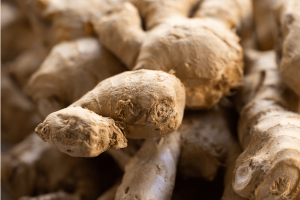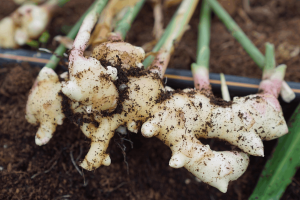How to Grow Ginger from Seed to Harvest
In our state of Telangana, ginger crop is cultivated in about 1-5 thousand hectares and the production of 7.5 thousand tons is achieved. India is second in ginger area with 23.6% area after Nigeria (56.23%). It is cultivated in Telangana state especially in Medak, Nizamabad, Karimnagar and Warangal districts.
Ginger is popular as a spice. Fresh ginger is widely used in cooking. The husk on raw ginger is removed and dried with lime water is called ginger. It is used as a remedy and medicine for stomach and dental diseases. Dried ginger is powdered and made into various ingredients like ginger candy and pickles. The oleoresin present in ginger is called “gingibarin”.

Weather:
Hot humid climate is perfect. Ginger also grows in partially shaded areas. A temperature of 19° – 28°C is suitable for ginger to grow. Areas with good water supply and 1000-1500 mm rainfall spread over 7-8 months are suitable for ginger cultivation.
Soils:
Ginger roots and ginger are spread 25 cm deep in the soil. So fertile oyster soils with a depth of at least 30 cm are suitable for ginger cultivation. Red, yellow and chert soils are suitable. Soils with soil PH level 6.0-6.5 yield higher.
Planting season:
Sowing should be done from the first week of April to the end of May. To sow in the month of May, there should be watered. It is best to plant ginger early in the monsoon season (south monsoon season). It can also be sown till the end of May when the weather is not favorable or land preparation is delayed.
Seed Dose:
2-3 seedlings and healthy tubers weighing 40-50 g can be used under seed. Depending on the variety, 600-1000 kg of seed is required for planting in one acre. In hilly areas (1000) 600-700 kg of seed can be planted. 900-1000 kg of seed is required in hill tribal areas.
Seed Per Acre:
Seed Rate: 600-1000 kg of seed is required for per acre.
Harvesting: 210-240 days
Yield: 6.5-8 tons per acre
Preparation of soil:
After plowing the land well, according to the nature of the soil, in case of sand or red soil, level pits (1.8×1.2 m) should be made. Drainage and sewage drains should be arranged side by side. Drainage canals should be dig 20-30 cm deep and sewage canals 45 cm deep.
Planting:
When planting seed tubers, plant the sprouted stem up. Care should be taken not to damage the seedlings either during planting or during seed treatment. 10 days before planting, ginger seeds are soaked in good water for 24 hours to have good germination percentage and are suitable for planting.
Plant the ginger in rows 35 cm apart, leaving a distance of 20 cm between them. Ginger germinate 2-3 weeks after planting. Plants grow about 2 feet tall. Crops like maize, black eyed peas and castor should be planted between the rows to provide shade to the crop. Castor can also be grown on ridges around the farm. After 2-3 weeks of planting and after 60 days, the soil of the ginger planting beds should be loosened. Ginger can also be grown under shade nets.
Intercrops:
Ginger grows well in shade. So it can be intercropped in coconut, coffee, banana, grape and lemon plantations. Ginger crop is mostly cultivated in the Ivy gourd bushes.
Water management:
Water should be given in summer i.e. once in 4 days in the first days of planting and once in a week in the last days of rainy season. Drainage lines should be installed to prevent water stagnation during rainy season.
Harvesting:
Ginger is harvested from December. Ripe ginger can be identified by yellowing and drying of the leaves and drying of the stems between the leaves and plants. Because it is a good market, otherwise it should be kept in the ground without digging and watered again.
If shade is provided during February-March and one or two taps are given, the yield will be up to 2 tons. If dig and marketed in April and May, it fetches a good price as seed. After digging the ginger, roots, scales and soil on the ginger should be removed and cleaned and marketed.

Yield:
Yields in ginger can be as high as 6.5-8 tons per acre under normal cultivation.
Selection and storage of seed ginger:
After digging, some ginger should be selected and stored as seed for the next crop. Insects and pests cause damage to the ginger. Following certain practices after digging ginger can keep the seed ginger from losing freshness.
Choose healthy, disease-free ginger. In order to prevent any damage to the seed ginger, the ginger should be dipped in a solution of Quinalphos 2 ml per liter of water and Mancozeb 3 g per liter of water for about 30 minutes and then dried in the shade.
Follow WalPencil to get to know cultivation tips for other vegetable crops like Watermelon and Muskmelon, Garlic, Turmeric etc.
